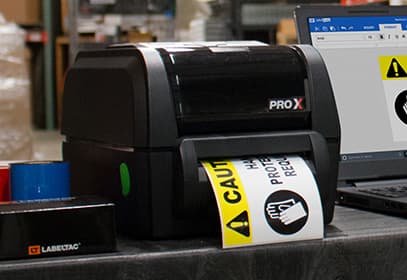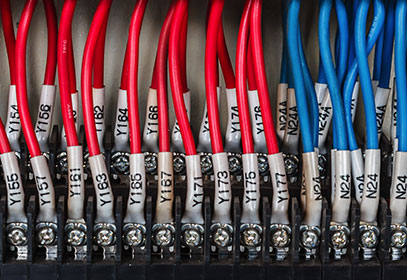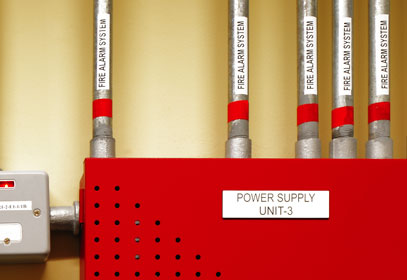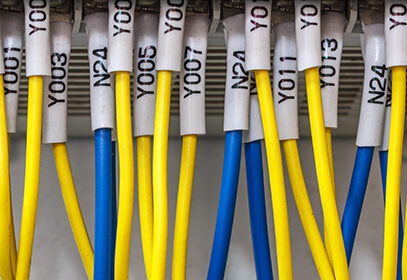Resources
A workplace with messy cables is a serious hazard and when workers don’t know what kind of wire they’re working with, the results can be disastrous. Although knowing where each and every wire or cable leads to might seem impossible, a wire marking strategy is both cost efficient and easy to install.
Use wire markers on electrical and control panels, in telecom and communication, for switches and outlets, in automotive and marine environments, or wherever else you need to manage multiple wires. Facilities can mark all types of wires and cables – power, control, fiber, optic, electronic, telecommunications, instrumentation, and wire marking can greatly improve safety and security by conveniently identifying wires for maintenance and repairs, allowing facilities to avoid costly errors.
There are several advantages and applications when it comes to wire marking, some include:
- Cable Organization: When cables are installed or serviced, it is important to mark them as you go to maintain an effective wire marking system.
- Electrical Safety: Knowing how electricity is distributed and what voltage wires are carrying, wire marking improves electrical safety.
- Efficiency: IT workers and electrical employees no longer have to waste time tracing a wire back to its source.
- Color Coding: With several different color code standards in place, selecting the right one is key to staying safe.
Marking wires is one of the best solutions to prevent wires from getting crossed, improving safety and security while preventing accidents. As the Leaders in Visual Safetyä, we are dedicated to helping companies create the visual systems, like wire marking, they need to stay safe and compliant.
Getting Started
- Confused about electrical standards? Check out our list of regulations and industry standards.
- Want to learn more about working safely with electricity? Explore our electrical safety resources.
- Have a question about labeling wires? Browse our wire marking Q&A hub.
- Ready to get started? Shop our selection of wire marking supplies.
Wire Marking Articles
Heat Shrink Tubing
Heat shrink tubing and wire markers are excellent visual organization tools. They are cost effective and improve productivity and efficiency within the workplace. …
Selecting a Marker Size for Wire Marking
An effective wire marking system boosts efficiency and safety in the workplace. This guide helps you determine which marker size is best for the task at hand. …
Electrical Wire Colors
Electrical wire colors are essential to the safety of anyone working with electricity. Click here and learn more about electrical color standards. …
NFPA 70E [Workplace Electrical Safety]
NFPA 70E was created to help prevent injuries to workers in energized environments. If you’re working with live energy, you need to know this safety standard to stay OSHA compliant. …
What is a thermal printer? (direct transfer)
Thermal printers are essential to printing in an industrial setting. Learn about the two types of thermal printing to determine which one suits your facility’s needs. …
ANSI TIA 606-B Cable Labeling Standards
ANSI TIA 606-B Cable Labeling Standards are a unified labeling method for the wires used in computer systems. These standards help businesses record data and keep their IT environments organized. Get to know these standards; they’ll help your business run more efficiently. …
Neutral Wire Color
Since electricity is an essential component of virtually every facility, it’s important to know which wires are associated with what color, and at what voltage. …
Electrical Wiring (Wire Color Codes)
Proper electrical wiring is not the place for uncertainity. Fortunately, Wire Color Codes exist to protect you from harm, while ensuring that the lights stay on. …
Labeling Electrical Conduits
Learn how to label electrical conduits so employees can quickly identify them. …
Cable Management
Properly marking wires can improve organization, facilitate faster maintenance, increase safety, and more. …
Wire Marking Questions and Answers
What is a phase wire?
In an electrical system there are quite a few names for different types of wires. In higher voltage systems, you will typically have either a single-phase system, or a three-phase system. The phase wires in these systems are the hot wires. Whenever the system has a power source, the phase wires will be hot so… …
What does the red stripe on a ribbon cable indicate?
Ribbon cables were once found in virtually every computer system, but more modern devices don’t use them nearly as much. While not as common, there are still millions of devices (both new and old) that use these cables to facilitate communication within various systems. When looking at a ribbon cable, you will likely notice that… …
What does it mean to ground a wire?
In most electrical systems you will find a hot wire, a neutral wire, and a ground wire. The ground wire is not strictly necessary for the operation of a device, but it is still an important feature. This wire is designed to provide a path for electrical current to travel if the normal paths aren’t… …
Is the black wire the hot wire?
If you are starting a project involving an electrical system, you need to make sure you know what each wire is so that it can be safely hooked up. While all electrical wires should be treated as if they were live until you can prove otherwise, it is the hot wire that is actually bringing… …
How are neutral wires identified?
Prior to touching any wires it is important to know what they are, and whether they have any current within them. This is important not only for safety while working with the wires, but also for ensuring the device you are working on works properly once it is powered up. Having the ability to identify… …
How are live wires identified?
When taking on any type of project involving an electrical system it is critical for safety to know whether the wires in the system are live or not. It is impossible to tell if a wire has current going through it just by looking at it, which is one of the things that makes them… …
What is the gray wire color used for?
If you’ve ever opened up or worked on an electrical system, you have undoubtedly seen multiple different wires within each cord. Each wire is a different color, and it is important to know what each of them means. The standard for 120-volt and 240-volt electrical cables is to have the gray wire be used for… …
What color(s) are used for ground wires?
When working on electrical systems it is important to learn what each of the different wires is so you can stay safe. In most systems there will be three separate wires, each of which are a different color. The wires in these setups are the hot wire, the negative wire, and the ground wire. The… …
How can wires be organized in a drawer?
If you are like most people, you have a drawer in your home and/or office that is filled with spare wires and cables. They are likely from a wide variety of different things, and while they aren’t in use right now, they are nice to have around in case they are ever needed. Simply having… …
What is the standard for labeling network cables?
Running network cables is a major part of many workplaces. These cables allow devices throughout a facility to communicate with each other, and to access the Internet or another outside network. Whenever installing network cables, it is important to label them properly to avoid mistakes. Properly labeled network cables also make it much easier to… …
How can wires be tested to tell if it's hot?
Electrical wires are one of the most dangerous items in any environment. Whether you’re trying to fix an outlet at home, or running a new wire in the workplace, it is important to learn how to stay safe. One of the many things that makes working with wires so hazardous is the fact that it… …
How can cables be organized for storage?
If you have cables in your facility that you aren’t currently using, you will want to make sure that they are stored away in a safe way. Cables can be quite costly, especially when they are very long. Keeping them in good working condition will help ensure they will be there when you need them.… …
What are ground wires?
When working on electrical wiring it is important to know exactly what you are doing. Even a small mistake can result in a serious shock, fatal electrocution, damage to machinery, or a variety of other problems. One of the most misunderstood aspects of wires for most people is the ground wire. Anyone who does any… …
How can cables be effectively organized?
Organizing cables in the workplace is an important part of any effort toward improving safety, eliminating clutter, and generally benefiting the way things are run. There are many different types of cables that exist in most workplaces, including power wires, computer cables, and more. Finding the right way to organize all of these different types… …
What's the difference between a positive and neutral wire?
When working with any type of wires you will find that there are at least two separate wires within (and often three, when there is a ground wire present). Understanding the difference between the positive wire and the neutral wire is critical for safety, proper wiring, and ensuring the equipment that needs the power will… …
What does the neutral wire do?
The neutral wire is one of the two primary wires in a standard AC system. It provides the path for electricity to take back to the electrical panel. It will run along with the positive wire, which is what brings the electricity from the panel (or other source) to the machine or whatever it is… …
What are ways to effectively remind workers of wire marking standards?
Implementing wire marking standards into the workplace is an important step for improving safety, reducing the risk of outages, and complying with best practices. It is, however, only the first step in the process. Even after you have developed a good set of standards in this area, you need to take steps to ensure your… …
What are the training procedures for wire marking?
Properly marking all wires within the workplace is an important way to improve the overall safety of a facility. As with most things, however, it isn’t always as easy as one would like. Having an effective wire marking strategy in place will only work if you also have the employees and other people working in… …
Why are wires so dangerous?
There are many different dangers and hazards that we experience throughout the day. In many workplaces, the number and type of dangers goes up dramatically. Risks to your health and physical wellbeing include things like physical injury, poisoning, fire hazards, explosions, contact with harmful chemicals, and more. One of the biggest dangers, however, is that… …
What are AC power standards?
When most people plug something in at their homes or offices, they will be using an AC, or alternating current, power system. This is in contrast to the DC (direct current) power systems that are used in certain commercial and industrial situations, and in residential systems in Europe and other locations. Understanding AC power standards… …
What are DC power standards?
DC Power, or direct current power, is commonly used overseas as a way to bring electricity to different locations. While AC (alternative current) is much more popular in the United States for most things, DC is used in certain situations. DC systems include almost anything powered by a battery, solar panel systems, high voltage direct… …
How do wire color codes improve safety?
When you look at a power cable of some sort, most people think of it as just a single wire. In almost every instance, however, it is actually two or more separate wires bundled together. For standard wiring, it will be two or three wires. One positive, one negative, and ideally, one ground cable. Each… …
Why should wire marking standards be followed?
Wire marking standards have been around for several decades now, and most companies today follow them quite well. There are many reasons why these standards are in place, and even more reasons why businesses choose to follow them. Read through some of the most important reasons why you should follow the established wire marking standards… …
What should be included on a wire label?
When labeling wires, it is important to think through what information will be on each label. If the label is required by OSHA or some other agency, the specific information that is necessary will be included in the regulatory documentation. In most cases, however, wire labeling is not strictly required, which means you have a… …
What materials are used for wire labels?
When creating labels for your wires you want to make sure they will be easy to read and last a long time. There are quite a few different options available when it comes to the type of label material that is used, and each one has its own advantages and disadvantages. Looking through the various… …
How does wire marking improve safety?
Improving workplace safety is critical for all companies. While the primary benefit of improved workplace safety is that employees and others in the area will be at a lower risk of injury, it will also help to improve efficiency, eliminate waste, and increase productivity. Wire marking is one simple way that a facility can improve… …
What are wire color codes?
When labeling wires in the workplace you want to make sure you are conveying as much information as possible. There are standards in place for various types of wires that state what colors to use and how to use them. Following specific color coding standards for wiring will help ensure those working with the wires… …
What is neutral wire color?
When working on electrical systems it is important to be able to distinguish what each wire is so you can ensure your safety. The neutral wire is one that is used in many systems, so understanding what the standards are for that wire color is helpful in any environment. In addition to having an electrician… …
What workplaces require wire marking?
Virtually every workplace in the modern world operates using electricity as well as computer systems. This means they all use wires of some type to make sure their systems are up and operational at all times. Anyone who manages a workplace should be considering what type of wire marking strategy they should adopt. Various different… …
What are wire marking standards?
Keeping wires properly marked is an important part of most workplaces. Failing to label wires will cause safety problems, reduce the reliability of systems, make troubleshooting more difficult, and result in a variety of other issues. Fortunately, there are quite a few different wire marking standards that can help any workplace plan out how they… …
Does OSHA regulate wire marking?
When looking at workplace safety efforts it is not uncommon to find an OSHA regulation that mandates certain action. For wire markings, however, that is not always the case. While OSHA does give instructions on things like what color wires should be in certain environments, they don’t specify the exact type of wire markings that… …
What are the hazards associated with improper wire marking?
When most people think about wire marking, they assume that it is a good idea because it makes things more convenient. For example, when you need to run a new wire, it is easy to pull the existing one out because you can identify which one it is without any trouble. While this is certainly… …
How do you mark a wire?
Wire marking is one of the easiest and most affordable ways to improve a facility, especially when it is done right when the wires are initially installed. Coming up with a good wire marking strategy will allow your facility to benefit from this process for many years to come. Take a moment to learn how… …
Why is wire marking important?
When running wires in a facility it is easy to simply put them where they are needed and then forget all about them. While this will get everything up and running, it is a short-sighted strategy that will undoubtedly cause a lot of problems down the road. Taking the time to label the wires now… …
What is wire marking?
Most workplaces, whether large manufacturing facilities, or small offices, have a lot of equipment in them to make sure things can get done. This equipment includes large machines, computers, phones, and much more. The one thing all of this has in common is that it requires wires to get power, allow communication, and perform their… …

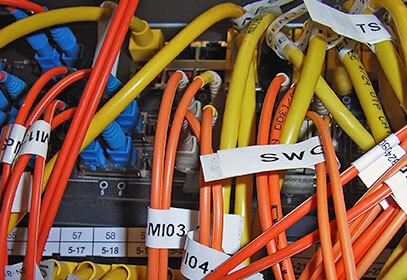
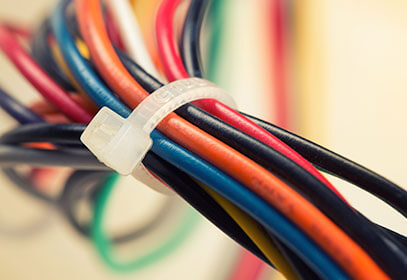
![NFPA 70E [Workplace Electrical Safety]](https://www.creativesafetysupply.com/content/images/articles/nfpa-70e-th.jpg)
